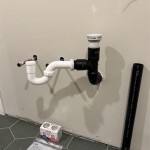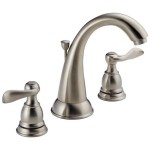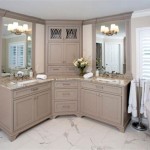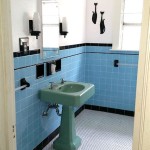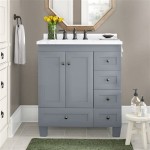Choosing the Best Bathroom Sink Pipe: A Comprehensive Guide
The bathroom sink pipe, often overlooked, plays a vital role in the proper functioning of any bathroom. Selecting the right type of pipe, considering its material, size, and configuration, ensures efficient drainage, prevents leaks, and contributes to the longevity of the plumbing system. This article provides a comprehensive guide to understanding the different types of bathroom sink pipes available, their advantages and disadvantages, and the key factors to consider when making a selection.
A sink pipe system, although seemingly simple, consists of several crucial components: the tailpiece, the P-trap, the drainpipe, and potentially an extension pipe. The tailpiece connects directly to the sink drain. The P-trap, a curved section of pipe, holds water that creates a seal, preventing sewer gases from entering the bathroom. The drainpipe carries wastewater away from the P-trap to the main plumbing system. The extension pipe might be needed if the drainpipe is not directly aligned with the P-trap output.
Understanding Different Pipe Materials
The material of the bathroom sink pipe significantly impacts its durability, resistance to corrosion, and overall lifespan. Several materials are commonly used, each with its strengths and weaknesses:
*PVC (Polyvinyl Chloride):
PVC is a widely used plastic known for its affordability, ease of installation, and resistance to corrosion. It is lightweight and can be easily cut and glued together using PVC cement. PVC pipes are suitable for both residential and commercial applications. However, PVC is not as heat-resistant as other materials and can become brittle over time, especially when exposed to direct sunlight. It is also not as aesthetically pleasing as some metal options. *ABS (Acrylonitrile Butadiene Styrene):
Similar to PVC, ABS is another type of plastic pipe. While also affordable, ABS is known for its higher impact resistance and ability to withstand lower temperatures. It is often black in color and typically used in drain, waste, and vent systems. ABS is not as widely accepted as PVC in some regions and might have specific code requirements. Connecting ABS to other materials requires specialized fittings. *Brass:
Brass pipes are a premium option, valued for their durability, resistance to corrosion, and aesthetic appeal. Brass is a strong and long-lasting material that can withstand high temperatures. It is often used in exposed plumbing applications due to its attractive finish. However, brass is more expensive than plastic options and can be more challenging to install, often requiring soldering. *Chrome-Plated Brass:
Chrome-plated brass pipes offer a similar aesthetic to solid brass, but with a layer of chrome plating. This provides a shiny and durable finish that is resistant to tarnishing. Chrome-plated brass is commonly used in exposed plumbing fixtures where appearance is important. While visually appealing, the chrome plating can be susceptible to scratches or damage if mishandled. *Stainless Steel:
Stainless steel offers excellent corrosion resistance and durability. It is a hygienic material and is often used in commercial kitchens and bathrooms. Stainless steel pipes are more expensive than plastic options but provide a long-lasting and reliable solution. Installation often involves specialized tools and techniques.When selecting a pipe material, it is essential to consider the specific application, budget, and aesthetic preferences. For concealed plumbing, PVC or ABS might be a cost-effective and practical choice. For exposed plumbing, brass or chrome-plated brass can add a touch of elegance. Stainless steel offers a high level of durability and hygiene for more demanding applications.
Key Considerations When Choosing a Sink Pipe
Beyond the material, several other factors influence the choice of the best bathroom sink pipe:
*Size and Configuration:
The diameter of the pipe must be compatible with the sink drain and the drainpipe connection. Standard sink drain sizes are typically 1 1/4 inches or 1 1/2 inches. The configuration of the pipes, including the length and angles, should match the existing plumbing layout. Using extension pipes or flexible connectors can help address minor misalignments, but it is crucial to avoid sharp bends or excessively long runs, which can impede drainage. *Local Plumbing Codes:
Building codes and plumbing regulations vary depending on the location. It is imperative to check with local authorities or a qualified plumber to ensure that the chosen pipe material, size, and installation methods comply with all applicable requirements. Failure to comply with local codes can result in fines or the need for costly repairs. *Ease of Installation:
The ease of installation is a significant factor, especially for DIY projects. PVC and ABS pipes are relatively easy to cut, glue, and assemble. Brass and stainless steel pipes often require more specialized tools and techniques, such as soldering or threading. If unsure about the installation process, it is always best to consult with a professional plumber. *Drainage Efficiency:
The design of the pipe system can significantly impact drainage efficiency. A smooth and unobstructed flow is essential to prevent clogs and backups. Avoid sharp bends or excessive length in the pipe run. Regularly cleaning the P-trap and drainpipe can help maintain optimal drainage performance. *Budget:
The cost of different pipe materials can vary significantly. PVC and ABS are generally the most affordable options, while brass and stainless steel are more expensive. Consider the long-term cost of ownership, including potential maintenance and replacement expenses, when making a decision. Sometimes, investing in a more durable material upfront can save money in the long run. *Aesthetics:
While functionality is paramount, the appearance of the sink pipe is also a consideration, particularly for exposed plumbing. Brass and chrome-plated brass offer a more visually appealing finish than plastic pipes. Consider the overall style of the bathroom when selecting a pipe material and finish.Common Pipe Problems and Solutions
Even with the best selection and installation, bathroom sink pipes can experience problems over time. Understanding these common issues and their potential solutions can help prevent costly repairs:
*Leaks:
Leaks are a common problem, often occurring at pipe connections or due to corrosion. Regularly inspect the pipes for signs of leaks, such as water stains or dripping. Tightening loose connections can often resolve minor leaks. For more significant leaks, replacing the damaged pipe section or connection is necessary. Applying plumber's tape to threaded connections can help create a watertight seal. *Clogs:
Clogs are another frequent issue, caused by hair, soap scum, and other debris accumulating in the pipe. Regular cleaning of the P-trap can help prevent clogs. Using a drain snake or chemical drain cleaner can dislodge stubborn clogs. Avoid pouring grease or oil down the drain, as these can solidify and contribute to clogs. *Corrosion:
Corrosion can occur, especially with metal pipes, due to exposure to water and chemicals. Selecting corrosion-resistant materials, such as brass or stainless steel, can help prevent corrosion. Regularly flushing the pipes with clean water can help remove corrosive substances. If corrosion is present, replacing the affected pipe section is necessary. *Slow Drainage:
Slow drainage can be caused by a variety of factors, including clogs, partially blocked vents, or improper pipe slope. Check for clogs in the P-trap and drainpipe. Ensure that the vent pipe is clear of obstructions. Verify that the drainpipe has a proper slope to allow for gravity-assisted drainage. *Sewer Gas Odor:
Sewer gas odor indicates that the P-trap is not properly sealed or that there is a problem with the venting system. Ensure that the P-trap is filled with water. Check the vent pipe for obstructions or damage. If the problem persists, consult with a professional plumber to diagnose and repair the venting system.Proper maintenance, including regular cleaning and inspection, can help prevent many common pipe problems. Addressing issues promptly can prevent minor problems from escalating into costly repairs. When in doubt, consult with a qualified plumber for assistance.

Buy Zap Bathroom Wash Basin Kitchen Sink Hose Pipe Pack Of 6 At Best S In Jiomart

Honbon Kitchen Sink Duty Drain Hose Tube Connector Accessories Pipe Pvc Flexible Cp Waste For Bathroom Wash Basin 2pc In

Pipes And Fittings For Bathroom Kitchen Choosing Them Right

Buy Fossa Flexible Waste Pipe Kitchen Sink Device Single Tank Drain Leaking Plug Fitting At Best S In Jiomart

Find The Best Bathroom Faucets For Your Home Jaquar

Common Sink Sizes How To Choose The Right Bathroom 2024

Plastic Waste Pipe For Bathroom Kitchen Sink Wash Basin Drain Water Ou Zap Bath Fittings

How To Hide Plumbing In Your Bathroom Victoriaplum Com
:strip_icc()/102021909-27c000b6bfff4d298e8df81f3d21ba12.jpg?strip=all)
The Ultimate Guide To Bathroom Plumbing Diagrams And Layouts

9 Diffe Types Of Wash Basin Buildpro
Related Posts
